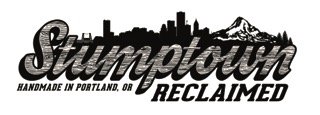From Salvaged Wood to Stunning Tables: My Process for Building Custom Pieces
At my workshop in Portland, OR, I specialize in crafting custom tables from reclaimed and salvaged wood. Each piece tells a story, with its unique grain patterns, knots, and history. Crafting these tables is a labor of love, and I take pride in every step of the process. Here’s how I transform rough, aged boards into beautiful, functional tables.
1. Hand-Selecting Each Board
Every great table starts with great wood. I carefully choose each board, looking for grain patterns, color, and structural integrity. Since I work with reclaimed and salvaged materials, every piece has its own unique history and character.
2. Cutting to Rough Size
Once I’ve selected the boards, I cut them down to a rough size, leaving extra length and width to account for precise trimming later. This ensures I have enough material to work with as I refine the tabletop.
3. Jointing One Side Flat
Reclaimed wood often has warps and irregularities. I use a jointer to create one perfectly flat face on each board, which is crucial for a sturdy, even tabletop.
4. Planing for Uniform Thickness
Next, I run the boards through a planer to ensure they are all the same thickness. This step brings uniformity to the tabletop and ensures a seamless final product.
5. Jointing the Edges Square
With the faces flattened and the thickness consistent, I joint the edges of each board to create straight, square edges. This step is key for a tight-fitting tabletop with minimal gaps.
6. Adding Festool Dominos for a Perfect Glue-Up
To ensure a strong, flat tabletop, I use Festool Dominos—precision-cut floating tenons that add strength and keep the boards aligned during glue-up. This technique enhances the table’s durability and prevents shifting over time.
7. Applying Glue and Clamping the Boards Together
With the boards prepped and aligned, I apply high-quality wood glue and clamp them together. The clamps apply even pressure across the entire surface, ensuring a rock-solid bond as the glue cures.
8. Cutting to Final Size
Once the glue has fully dried, I trim the tabletop to its final dimensions, ensuring clean, crisp edges and perfect proportions.
9. Extensive Sanding
Sanding is a critical step in achieving a flawless surface. I progressively work through finer grits, smoothing the tabletop while enhancing the natural beauty of the wood grain.
10. Finishing with Rubio Monocoat
To protect and enhance the wood, I apply Rubio Monocoat, a high-quality, eco-friendly finish that deepens the wood’s character while providing a durable, long-lasting surface. The final result is a stunning, handcrafted table that is built to last.
Bringing Your Custom Table to Life
Every table I build is a reflection of craftsmanship, sustainability, and the beauty of reclaimed wood. Whether you’re looking for a rustic farmhouse table or a sleek modern design, my goal is to create a timeless piece that will be cherished for generations.
Looking for a custom-built table for your home or business? Let’s talk about bringing your vision to life!
